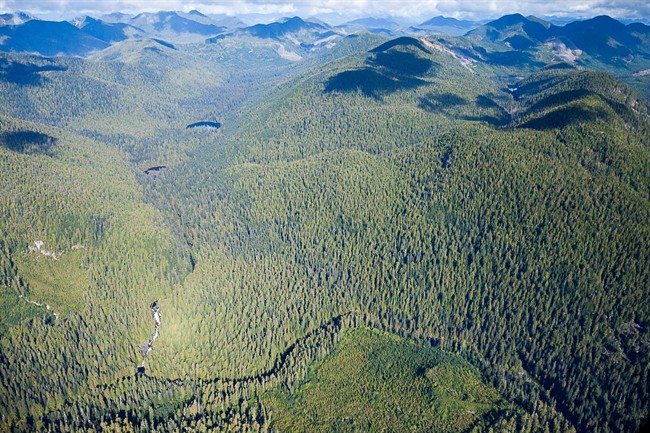Research based on satellite imagery shows that almost all industrial activity in Canada’s intact forests is occurring on the home ranges of endangered species.

A report released Tuesday by Global Forest Watch Canada says 92 per cent of the land affected supports at least one endangered species. It says 14 per cent of activity — mostly in the forestry and energy sectors — occurs where there are at least six species at risk.
“It doesn’t mean that all forestry is bad,” said Wynet Smith, the group’s director. “But in terms of habitat for certain species, especially species at risk, how much disturbance there is, is key.”
Global Forest Watch combined Landsat images with data from Environment Canada to assess changes in Canada’s forests between 2000 and 2013. It defined an intact forest as an area of at least 500 square kilometres with no linear disturbances such as roads, seismic lines or cutblocks.
The report found that, overall, Canada lost about five per cent of its undisturbed forest land in that time period. About 60 per cent of that loss occurred in Quebec, Ontario and Alberta.
Forest degradation is particularly hard on species such as boreal caribou, which depend on old growth for their habitat. Alberta, for example, saw damage to 43 per cent of undisturbed forests used by caribou over the study period. British Columbia had 68 per cent of its prime caribou habitat degraded.
READ MORE: $32M Cenovus project aims to help threatened caribou near Alberta oilsands
Industrial activity in such regions also harms birds. More than six per cent of woodlands that are home to more than 100 bird species can no longer be considered intact, the report says.
Smith said the findings should help policy-makers and forest managers track the combined impact of different kinds of industrial uses.
“It’s basically about monitoring cumulative development,” she said.
“What (the report) shows is that there’s ongoing cumulative development in Canada’s forest landscapes. There’s less and less untouched forest.”
The main driver, said Smith, is forestry.
She cautioned that the group’s report is conservative. Its data set doesn’t necessarily capture smaller disturbances, so the study probably underestimates industrial impacts.
“If we use higher-resolution imagery, sometimes we pick up more things, but that’s pretty much impossible to do at a national level.”
Smith said the report could be a valuable planning tool.
“It doesn’t mean you don’t have any development, but if you’re wanting to have sustainable development … are we assessing those things in advance and understanding the trade-offs?”
An industry spokesman said forest planning is done by individual companies within each forestry management area. The Global Forest Watch report contributes to the conversation, he said.
“From an industry perspective, this is useful information.”
Smith said the good news is that Canada still has abundant reserves of virgin forest — 4.2 million square kilometres of it, with about 18 per cent of that held within protected areas.
“There’s a lot of opportunity for conservation.”
READ MORE: Study says climate change forcing boreal forest to tipping point
Some environmental groups have called for at least half of Canada’s boreal forest — the vast stretch of green that stretches across the northern reaches of most provinces — to be included in some type of conservation zone.

Comments